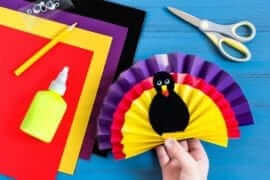How to Survive “The Stretch”
Whoever said that April is the cruelest month never experienced March as a school teacher.
First sentence of this blog and already the English teachers are thinking, “Wait, this guy gets paid to write and he doesn’t even know it was T.S. Eliot?!?” Yes, of course I do, I Googled it. The important take-away from your cantankerous response is that you’re cranky. And I get it. We all know that teaching from President’s Day through Spring Break can be the toughest stretch of the school year. Here’s how to survive “the stretch.”
I had a wise boss that once told me that I should never come to her with a problem, only problems AND proposed solutions. So, let me take a crack at some suggestions on how we can all survive and thrive during those seemingly interminable seasons of the school year.
- You reap what you sow. There are so many breaks and days off during the first half of the year, that we never feel the full effects of the routines that we create in our classrooms. Bad habits of disorganization and inconsistent classroom management, for example, can be seemingly reset with a day off. But when you hit The Stretch, you’ll feel worse than a middle-aged man trying yoga for the first time. Indeed, The Stretch will try to kill you. If you’re reading this towards the end of the year, then sorry, better luck next time! During semester one, realize that the organization and classroom management you’re using is going to have magnified effects later in the year. Do something about it while you still can. Retraining the kids during The Stretch is impossible because you’ll have no credibility and because they’re feeling it just as much as you are. Which brings me to…
- Practice empathy. You and your students are both grinding through The Stretch and it’s wearing on both of you. The older your students are, the more they can reflect and articulate it, but if you teach younger students, they are going to be feeling unusually antsy and they won’t know why. Either way, don’t take out your frustration or exhaustion on them. You know why? You’re the grown-up in the room! I used to think it was a novice teacher thing to bring personal baggage into the classroom. Now, I realize that this phenomenon knows no age. I’m not saying that we don’t have bad days here and there. I am saying that to the best of your ability, be the same, patient, positive person every time you walk through the door into your classroom, especially, during The Stretch. In order to do this, you have to…
- Take care of yourself. I’ve realized that school is a place where the amount of valuable work you could do approaches infinity. Lessons can be better, assessments improved, technology incorporated, classrooms decorated, and on and on. At some point, teachers have to draw the line and know that it’s not perfect, but for now it’s done. Nobody burns out in November because even if you’re running too hard, you have days off to recuperate. The same pace during The Stretch, however, will wear you down. Find the elusive work-life balance. Set boundaries for school commitments around your home life that you just won’t cross. And actually do the two things you’ve read in every healthy-living blog since the creation of the internet. Eat right and exercise. Besides, summer’s coming! Which reminds me that the end of the school year is the perfect time to…
- Try something new. Do you want to hit the ground running in September? Then test out new techniques and technologies now. For many of us, standardized testing will soon be over. Final evaluations will be done. That parent has finally stopped emailing you. It’s time to take risks in the classroom. There’s simply no way to learn new teaching strategies effectively in the fall. It’s hard enough learning your new students’ names and their, shall we say, idiosyncrasies. Take those new ideas for a test drive now. Work out the kinks. Modify them for your classroom. And ask your students for honest feedback about how they worked. I’m starting to use EdPuzzle and self-grading Google Forms for quizzes. Check them out, or find your own. Think about what you want to be better or easier next year and do something now. And speaking of do something…
- Do something about it. If you’ve developed the good organization and classroom management that I mentioned earlier, The Stretch can actually be a very enjoyable time of the year. We are creatures of habit, and healthy routines feel both easy and productive. If that’s you and you’re in a good place in the classroom, then use The Stretch to do something about an issue that has been in from of you all year. For me, it’s usually a student. You know that kid who has all the outward signs of having a story. If you’ve been teaching for more than 10 minutes, you know what kind of stories our kids can have. When better to go out of your way to make a difference in that student’s life? Pull them aside. Ask them some questions. And if the relationship develops, help them in the ways that you can as a teacher. Listen. Help them see their problems through a grown-up’s lens. If necessary, get them help. Most of all, make them feel important. Knowing you’re special is a salve to all kinds of wounds. And I’m not just talking about the student.
I hope you find these tips helpful, or at least useful as you look forward to next year! All the best to both of us as we work our way towards the end of the year.
Todd Curtis is a social studies teacher at Howell High School.





